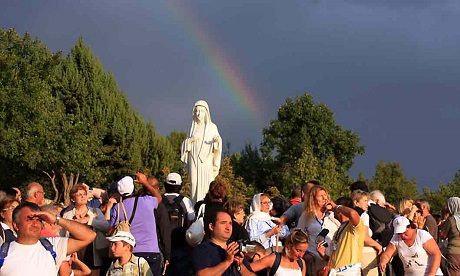The Papal envoy to Medjugorje, Archbishop Henryk Hoser, says the Medjugorje message (allegedly delivered by Our Lady) can be “put at the same level as those delivered in Lourdes and Fatima.”
“With regard to the international phenomenology, they are very similar,” Hoser says.
“These [Lourdes, Fatima and Medjugorje] are certainly the three greatest pilgrimage sites. Here [at Medjugorje] we have two and a half million pilgrims a year.”
Hoser’s comparison of Medjugorje with Lourdes and Fatima has raised hopes that official confirmation of Medjugorje as may be possible.
“Lourdes is a great shrine based on the dogmatical truth about the Immaculate Conception and it tells us about the identity of the Mother of God, Hoser says.
“Fatima gives us a look at the contemporary history of the world, the current as well as the future.”
Medjugorje’s most important characteristic is “the power of grace” he says.
Between these three sites, Hoser says “there is a kind of spiritual solidarity and bondage.”
“The power of grace that is felt here, the power of God’s words here proclaimed, make us witnesses to many radical transformations that are happening here.
Hoser notes Medjugorje has become “the confessional of the world” .
It offers 35 confessionals with priests hearing confessions in seven different languages, with “a constant line of penitents at all hours.”
Many priests say the confessions make them believe there’s a supernatural grace in Medjugorje.
In regard to the apparitions of Our Lady some citizens have allegedly experienced over the past 30 years since they were children, Hoser says the Church’s position continues to be “let’s wait and see.”
“In general terms, the message of peace that emerges from the Medjugorje phenomenon is always valid,” he says.
Source
Additional readingNews category: World.




